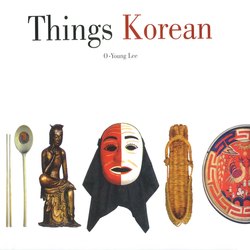Читать книгу Things Korean - O-Young Lee - Страница 21
На сайте Литреса книга снята с продажи.
ОглавлениеA Long, Long Bamboo Pipe
Dambaetdae
Koreas long-stem bamboo pipe, the changjuk, has got to be the longest pipe in the world. Chang means long, and juk means bamboo, so you can imagine what it looks like just from its name. In reverse proportion to the western pipe, the changjuk has a tiny bowl, the size of a big thimble, and a long, long stem.
Take a closer look at the Korean pipe and you can learn a lot about East and West. When you consider the importance of the bamboo in Korean culture, it is no mystery why the Korean pipe is bamboo. The bamboo is one of “the four gentleman" who are exclusive members in a form of Korean classical art. (The other three gentlemen, by the way, are the plum, the orchid and the chrysanthemum.) these four depict a certain aspect and principle of Confucianism, the intellectual and moral foundation of Korean culture. The principle which the bamboo embodies is the straight and firm rectitude of the Confucian scholar. The straight stalk signifies fidelity to one's principles, and its hollow center denotes humility. In the words of one Confucian scholar, the bamboo, which is neither tree nor grass, avoids the extremes of both tree and grass, and roots itself in the moderation of the golden mean. It is firm like the tree, yet yielding like grass. One classical poet, therefore, said that he might be able to manage without his favorite dish a long time, but he could not survive even a moment without beholding the bamboo.
The changjuk pipe, rather than being made from bamboo, is bamboo. In this way it manifests the beauty inherent in the ham-boo even more than does either the Korean flute or cane, which are made from bamboo. It is long and slender, just as we conceive of the bamboo, and, with the exception 01 its bowl and mouthpiece, needs no additional parts to perform its function. It has even gone and hollowed itself out for us.
The image it imbues is basically different from the western pipe, artificially bent and hollowed as it is. Put the bamboo pipe in your mouth, draw on it, and listen: you hear that soft zephyr wafting through the bamboo grove. And the smoke curling from its bowl...the mist is rising there in that grove.
There is good reason for the pipe's length. Our culture is oriented toward the elderly. In the western pipe we have the youthful image of sailing the seas in search of adventure; compare this with the image our pipe conjures, of the elderly gentleman reclining quietly with his long pipe, reciting a few delectable lines of classical poetry. While there is nothing more cumbersome than trying to handle this three-foot pipe when you are out and about, there is no greater joy than sitting at home in one's room, as the elderly will, and spending some time with the changjuk.
A wonderful thing it is for the elderly. He does not have to stir to use the ashtray over there across the room. With his bamboo conductors baton he can instruct his servant to fetch it. And he has his scepter to brandish for instilling in mannerless youth some respect for authority.
There is yet another reason for its length. It improves the quality of the smoke. The bamboo pipes long stalk gives the smoke time to cool off and drop its bite. And long before modern medicine ever discovered the harmful effects of nicotine Koreans were eliminating it on its way up through that long stalk. It was obvious to us long ago that the longer the smoke has to travel, the less harmful it will be.
The Korean bamboo pipe. That faint sound of an old gentleman clearing his throat is really the wind stirring in the bamboo grove. And the smoke rising from that small bowl is really this old gentleman's long,thin white beard.
